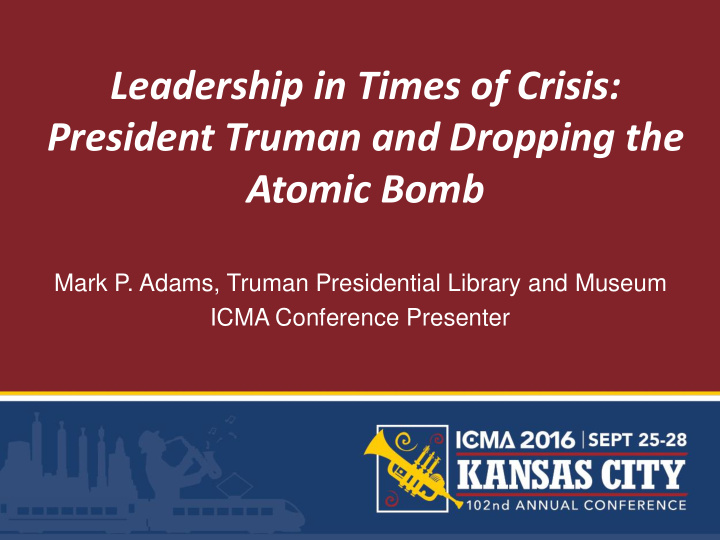



Leadership in Times of Crisis: President Truman and Dropping the Atomic Bomb Mark P. Adams, Truman Presidential Library and Museum ICMA Conference Presenter
About me • Content expert • Examine decision making • Weighing all options positives and drawbacks empathy considered decision
Background information Truman’s background Vice President until April 1945 April 1945 – August 1945
The Big Three Potsdam Conference, July 1945
Sketch of successful test in New Mexico, July 1945 From Leslie Groves report to the Secretary of War, Henry Stimson
Truman’s options Land invasion of Japan Continue conventional bombing
Truman’s options Demonstrate bomb on an Drop the bomb on an inhabited unpopulated island Japanese city
Truman’s options Land invasion of Japan Continue conventional bombing • • Safe approach Eventual surrender possible • Less casualties than Atomic Bomb • Negotiated peace • No radiation threat • More humane • More US and Japan casualties • Japanese defenses stronger than • Less loss of life thought • War would continue • Japanese defenses in the right positions (secret intelligence) • More casualties • Public opinion tired of war • Stalemate/no surrender • Stalemate possible • Public opinion tired of war
Truman’s options Demonstrate bomb on an Drop the bomb on an inhabited unpopulated island Japanese city • • Might cause surrender End war quickly • • Less radiation threat Save American lives • • US POWS moved into area Surrender likely • • Technology might not work Revenge for Pearl Harbor • • Only two bombs existed Devastating loss of life • • Threat to air crews if target US lose moral high ground announced ahead of time • US seen as aggressor • Who would witness, who • Radiation after effects would provide credible testimony?
Questions/Comments? Additional Information www.trumanlibrary.org Email: mark.adams@nara.gov
Recommend
More recommend